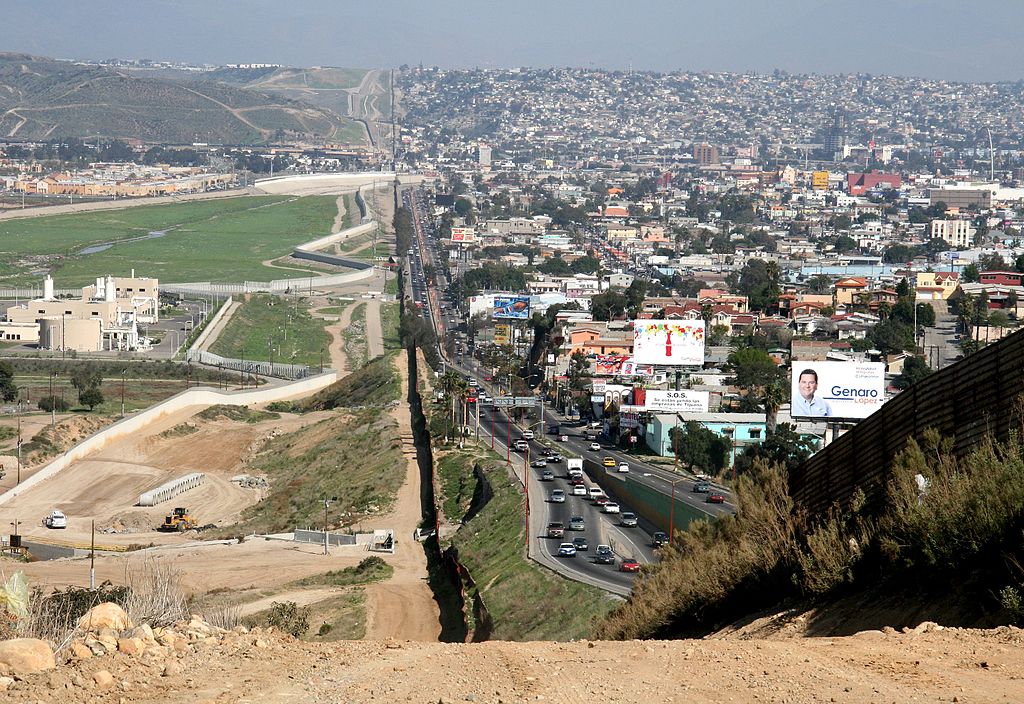Drug and Migrant Smuggling Across the US-Mexico Border: An Interview With Natalia Mendoza
When it comes to policy issues at the center of the U.S.-Mexico relationship, drug trafficking and migrant smuggling are near the top of the list. Yet while President Trump is happy to make off-the-cuff comments about criminal aliens or dangerous drug traffickers, it’s much rarer to hear from people who have viewed these issues from the field.

Published by The Lawfare Institute
in Cooperation With

When it comes to policy issues at the center of the U.S.-Mexico relationship, drug trafficking and migrant smuggling are near the top of the list. Yet while President Trump is happy to make off-the-cuff comments about criminal aliens or dangerous drug traffickers, it’s much rarer to hear from people who have viewed these issues from the field.
Seeking to add an expert perspective to the debate, I reached out to Natalia Mendoza, an assistant professor in the Department of Sociology and Anthropology at Fordham University. She spent years living in the important smuggling hotspot of Altar in the Mexican state of Sonora while conducting ethnographic fieldwork on drug and migrant smuggling. Located along the Pacific Coast, it is the stopover point from drugs and people moving north from Sinaloa before crossing into the Arizona desert.
In this interview with Lawfare, Natalia describes how Altar’s community initially viewed drug trafficking and how the smuggling dynamics and business models evolved and centralized over the last decade. Today, the mafia “bureaucracies” and permanent militias present in Altar and other parts of Mexico control broad swaths of Mexican territory. Yet even as the conditions that led to their creation change, these groups show no signs of disappearing.
The following phone interview has been edited for brevity and clarity.
In 2005, you conducted fieldwork in Altar, Sonora that, among other things, looked at how local residents viewed drug trafficking. What did you find?
At that time in the U.S.-Mexico border region of Sonora there was a degree of normalization surrounding drug trafficking, but smuggling was a very different activity than it is today.
In 2005, people in the drug business could work as independent subcontractors, offering various services and logistics to multiple people. The people from Altar knew the land, the routes, where to land a plane, or where to store drugs while you waited for the right time to cross them [into the United States]. At the time, there wasn't a sense of permanent belonging to a well-structured criminal organization.
Traditional local drug traffickers often alternated between legal and illegal businesses, working as cattle ranchers and doing a little smuggling on the side. In that sense, drug smuggling provided a grace period to a rural lifestyle that was becoming unsustainable in economic terms, as cattle ranching and agriculture became less profitable. It allowed people to keep the ranches and stay in town, rather than migrating to the cities or to the United States and taking up salaried jobs. It suited the region’s frontier values, which hold autonomy and independence very highly. It was also a much less violent activity than it is today.
This practice began to change around 2009. The militarization of the war on drugs created an escalation in violence, and it also led to the centralization and professionalization of criminal organizations. The structure moved from independent contractors who were hired for a particular service to full-time employees that were paid a continuous fee every week, two weeks, or month—similar to a cartel payroll. A fully armed professional militia, which presumably reports to the Sinaloa cartel, was established in Altar in order to keep permanent control of the territory and collect fees from the smugglers using the routes to the border.
This was the same time frame when Altar was emerging as a migrant smuggling hotspot, correct?
Yes, and smuggling of undocumented migrants was exactly why Altar became such a profitable plaza. In the beginning, drug trafficking and migration were two separate entities that had very little to do with one another beyond using some of the same routes across the border. Up to that point, the smuggling routes were similar to commons. They could be used by anyone—even when they went through ranches or private property—as long as you didn’t damage anything. However, around 2010, there were huge numbers of undocumented migrants moving through these routes, and drug traffickers began to complain that migrants were attracting too much attention: The migrant corpses and the journalists covering migrants’ stories were jeopardizing drug trafficking activities.
Suddenly, there was a need to regulate human smuggling. The system that arose was the collection of fees, as a local mafia of sicarios [hitmen] began charging fees to the migrants just to let them pass through Altar. Central Americans would pay more than Mexican migrants, which meant that the people collecting the fees had to create all these devices to differentiate between Central Americans and Mexicans from southern states who didn’t have any documents. Imposing those fees caused a lot of conflicts, as drivers would try to make extra money by not declaring the true numbers of migrants or their backgrounds to the mafia.
Yet, what is really significant is that in order to maintain this system of fees, the mafia had to have a permanent group of people policing the migrant traffic. For the first time, you had armed people surveying every road, car and person. Even as migration decreased significantly in Altar, that structure hasn’t gone away. This is because they have found other revenue sources to fill the gap, these usually turn around extraction and extortion. Some of these groups have ventured into illegal fishing, mining or illegal fuel-tapping. And when they don't carry out these activities directly, they act as non-negotiable intermediaries, as is now the case with the fishing industry along the Gulf of California. It’s also clear that once a group of armed people has the weapons, knowledge, territorial control, and has created the criminal structure, they are going to strive for survival and be difficult to demobilize.
How does this mafia bureaucracy operate in practice?
In this region, the mafia mostly taxes only illegal activities. In other regions of Mexico, the mafia also collect fees from legal activities along with illegal ones. This works in the same way that mining companies in Mexico have concessions to extract minerals: Owning a plaza is like owning the “concession” to exploit that particular place. These individuals allegedly have the support of the Sinaloa Cartel, but are not their workers. They act with a degree of autonomy locally: they charge fees and with those fees they maintain the entire system.
What is interesting is that the mafia now allows drug traffickers from other groups to operate in Altar as long as they pay the fees. Right now, if you are a drug trafficker and you want to work in Altar, you need to pay $10,000 a month. That gives you some benefits. In theory, the local mafia and sicarios are in the charge of paying off the local police and keeping raiders at bay. So, if you pay your $10,000, that not only gives you the right to work there, but it also takes care of some of the fees that the municipal and state police would be collecting from you directly.
In essence, this criminal bureaucracy centralized the drug trafficking operations in Altar. Instead of having a number of individual relationships between drug traffickers and the police, you have the mafia that manages the whole thing, collects the fees from everyone, and then pays everyone’s fee to the police.
What comes next in your research? What topics are you looking at now?
One thing that I’ve been thinking a lot about lately is how important it is to understand how territorial control is exercised by various competing groups, and how extraction and extortion overlap. There are conflicting claims over the territory. In the same space south of the border, you may have transnational mining companies operating through concessions, the ranchers who own the land, and the sicarios who own the routes, plazas, and collect the fees. You have these three layers. Then you have the police—federal, state and municipal, and whose jurisdictions overlap.
It’s ultimately a very privatized understanding of territory. It is as if the neoliberal reforms that privatized strategic state sectors also transformed illegal economies. The mafia is claiming private ownership over resources that were previously viewed as communal or public. This has even reached the U.S.-Mexico border itself. The border is segmented and every segment of the border has an owner: It belongs to a specific group, subgroup, or person within the cartels. If you want to go through that segment, you have to alert the owner, pay the fee, and so on.
Privatization has been carried out to the extreme and it has transformed property relationships: legal and illegal. Whereas on the U.S. side of the border, territory is composed of a combination of private property, state parks, military bombing ranges, and the Tohono O'odham Reservation, on the Mexican side what you see is three layers of private exploitation: ranchers, smugglers, and mining concessions. From the U.S. perspective, it is hard to see just how complex territorial regimes are on the Mexican side, yet to understand border dynamics, it is crucial to understand how control and competition over these resources is organized on each side.



.jpg?sfvrsn=676ddf0d_7)

